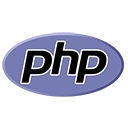Containerization with Docker is a popular method for packaging and distributing applications, including those built with PHP. This guide will walk you through the process of containerizing your PHP applications using Docker:
Step 1: Install Docker
If you haven't already, install Docker on your development machine. Visit the official Docker website (docker.com) for instructions on downloading and setting up Docker for your platform.
Step 2: Create a Dockerfile
Create a file named `Dockerfile` in your project directory. This file defines the instructions for building your Docker image. Below is a basic example for a PHP application:
# Use an official PHP runtime as a parent image
FROM php:7.4-apache
# Set the working directory in the container
WORKDIR /var/www/html
# Copy your PHP application into the container
COPY . .
# Expose the port your PHP application uses
EXPOSE 80
Step 3: Build the Docker Image
In your terminal, navigate to your project directory and run the following command to build a Docker image from your `Dockerfile`:
docker build -t my-php-app .
Step 4: Run the Docker Container
Now, you can run a Docker container from the image you built. Replace `
docker run -d -p :80 my-php-app
Step 5: Access Your PHP Application
Your PHP application should now be accessible in a web browser at `http://localhost:
Remember to customize the `Dockerfile` for your specific application and dependencies. You can also use Docker Compose for more complex setups, such as including a database container alongside your PHP application.
Conclusion
Containerizing PHP applications with Docker simplifies development, deployment, and scaling. It ensures consistent environments and eases collaboration among developers. Explore Docker's documentation for more advanced features and best practices.

